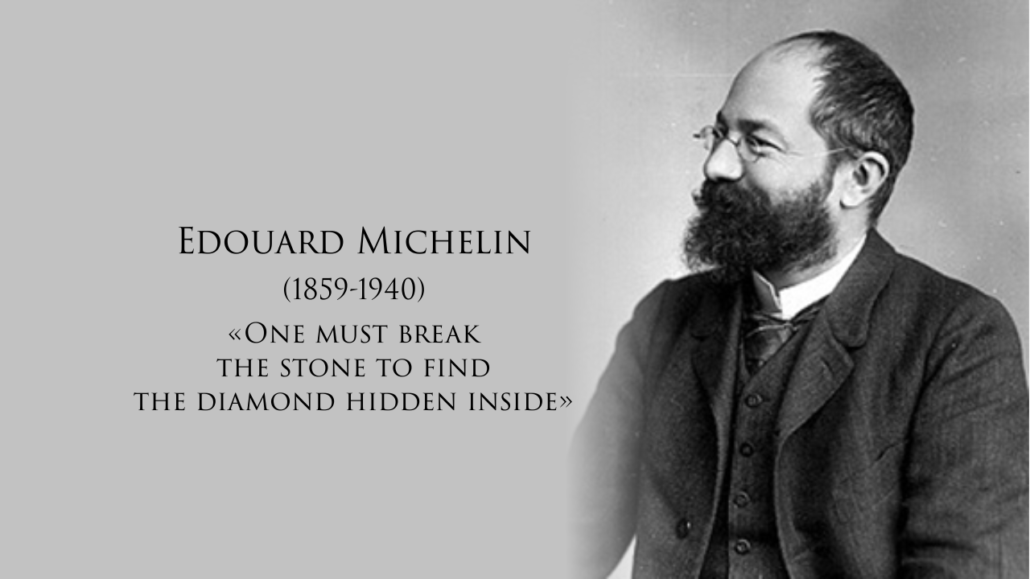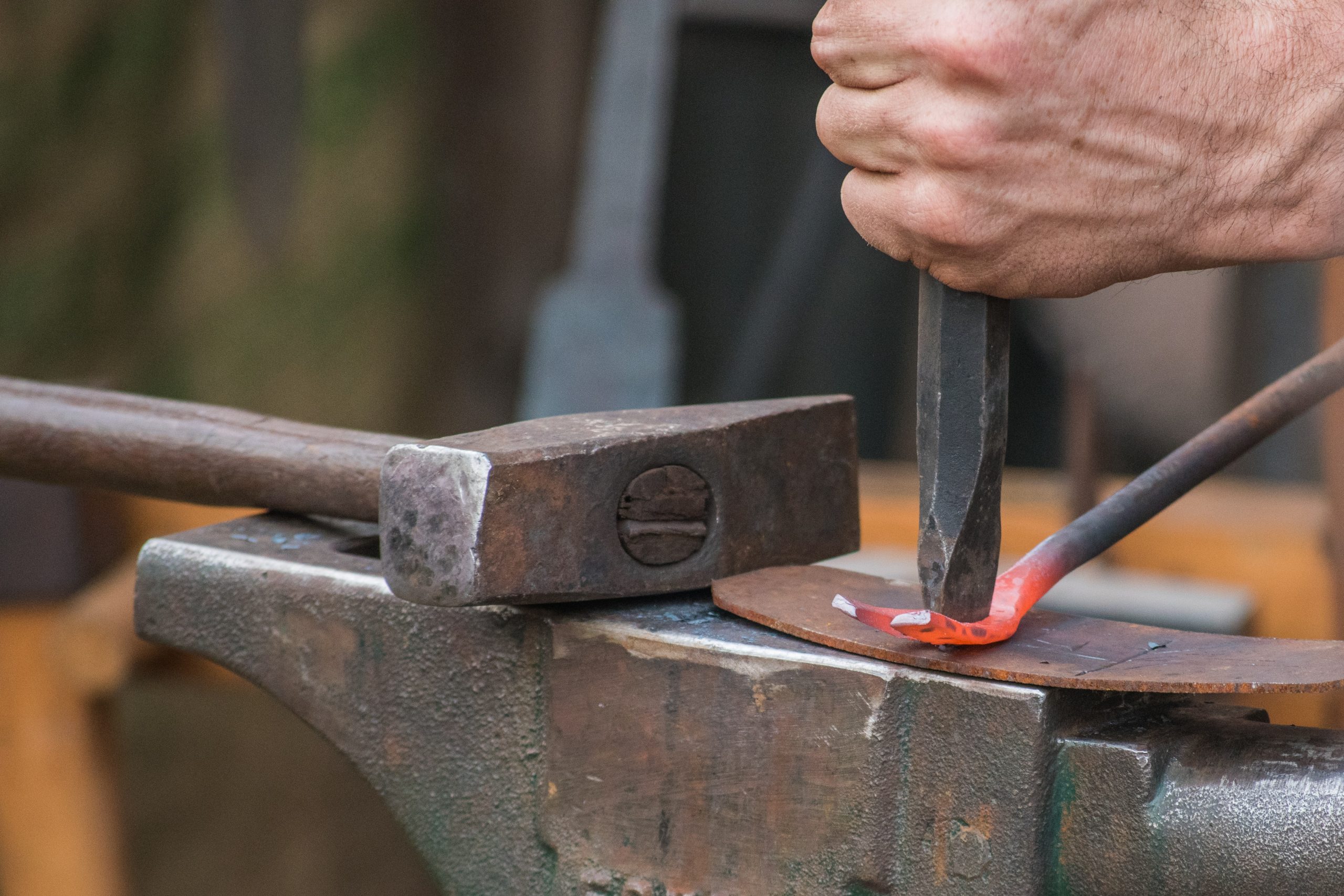Last week I attended a leadership breakfast event with guest speaker, Alexandre Havard, Founder of the Havard Leadership Institute and author of Virtuous Leadership, Created for Greatness and From Temperament to Character.
The title of the talk was, A Business Case for Character. Alex spoke about virtue, magnanimity, humility and greatness. It was an excellent presentation and inspiring in many ways.
To set the context, he told the incredible success story of Marius Mignol, a young man that overcame many obstacles in life to become the tire engineer of the century. Mignol wasn’t the first to conceptually design the radial tire, but he was the first to bring it to market. To this day, the Michelin Radial X is among the most revered feats of engineering in the auto industry.
Everything a car does – steering, braking, cornering, accelerating – it does through the tires. After the invention of the internal combustion engine, regular tires became deficient and dangerous. Blowouts were common and with the increased speed of travel, this led to serious injury and death.
Radial tires allowed heat to be equally dispersed throughout the tire so that the tires wouldn’t blow out. This was Mignol’s great contribution.
Amazingly, Mignol joined the Michelin Corporation as a worker in the print shop. When Eduardo Michelin came across his desk, he noticed the young man had created a simple ruler to determine foreign currencies quicker than anyone else. Michelin noticed Mignol’s genius and sent him to work in the engineering/design area of the company.
As Havard aptly pointed out, “You need to break the rock to discover the diamond inside.” Michelin was convinced Mignol had greatness inside of him that just needed the right opportunity to be discovered.

As I was listening to Havard speak about Mignol’s journey, I was struck by something he said almost in passing. At the age of 15, because of a family situation, Mignol had to quick school to work for the family. What was the situation that kept him back and how hard was it on Mignol? What did his teenage adversity teach him about life, creativity and perseverance? How did those early lessons inform his future work and the eventual creation of the radial tire? Eduardo Michelin was the one to discover the diamond inside Marius Mignol but the formation of that diamond began many years before.
I agree with Havard – character is king. It’s helpful to understand the process involved in the formation of character, virtue, magnanimity and humility. I’ve heard this process called the Diamond Life.
[bctt tweet=”Character is the essence of leadership – not skill or talent or strategy or personality.” username=”BrettPowelllorg”]
Beautiful diamonds and the lead in your pencil have the same root element – carbon. In the case of diamonds, the atoms themselves are more tightly arranged than they are in the pencil. It is the tightness of the bond that enables their beauty.
To form bonds that are tight enough to transform carbon into a beautiful diamond requires extremely hot temperatures and very high pressure.
The ‘suffering’ the elements go through is what creates their beauty. This process usually takes place in the deep, dark places of the earth where elevated temperatures and high pressure exist naturally.

The old testament story of Joseph is a great illustration of the process and the power of the Diamond Life. If you are not familiar with his story, you may want to give it a read. You can find it in Genesis chapters 37-50.
After years of enjoying favored status in the home, Joseph ran into a series of significant setbacks. As a result of his brother’s jealousy, he was stripped of his position as favorite son, he was stripped of his coat of many colors and finally Joseph was sold into slavery by his own blood. They made it look as though he had been killed by a pack of wolves which devastated his parents.
Joseph lived in various settings of extreme hardship, including many years in prison. Everything he normally depended on was taken from him. Everything he previously leaned on for identity, status and a sense of belonging was no longer available.
He thought his life was over. Little did he know that the hardship and darkness was unfolding according to God’s plan. Joseph’s “Diamond Life” was preparing him for the season of blessing and prosperity God had in mind even as he was going through hell.
The lesson holds true for us: the difficult things in our lives that we think are obstacles to growth, are the very experiences God is using to strengthen us – to refine us, to purify us, to mold us and fashion us into the image of His Son. It’s a bitter pill to swallow but the crucible of daily life is the furnace of transformation.
[bctt tweet=”The difficult things in our lives that we think are obstacles to growth, are the very experiences God is using to shape our character. The crucible of daily life is the furnace of transformation.” username=”BrettPowellorg”]
As a leader, when you are doing everything you can to realize a dream and it seems like it is dying, God might be writing a bigger story. He is using the diamond life to form something beautiful in you. Don’t quit.
[bctt tweet=”As a leader, when you are doing everything you can to realize a dream and it seems like it is dying, God might be writing a bigger story.” username=”BrettPowellorg”]
As I was leaving the leadership breakfast and pondering Alexandre Havards talk, I was reminded of a principle often spoken about by Jim Collins. It’s called the Stockdale Paradox, named after Admirable James Stockdale who was the highest ranking commanding officer detained in the Hanoi Hilton. He was shot down in 1967 and remained a prisoner of war until 1974. He was tortured over 20 times during that period.
When Jim Collins interviewed Admirable Stockdale, he asked what kept him going during his period of captivity. Stockdale told him that he had an unwavering belief that one day he would get out.
Collins summarized, “Oh, you were an optimist.” But Stockdale sharply corrected him, “No, I was NOT optimistic.” Collins was confused and requested an explanation. “The optimists,” Stockdale said, “Were the ones who thought they’d be out by Christmas. But Christmas would come and go. Then Easter would come and go. Summer too, followed by fall, then Thanksgiving and Christmas again. Year after year. The optimists suffered from a broken heart which weakened their immunity. It took their spirit and sometimes their lives.”
Stockdale had developed a magnanimous hope that one day he would be set free and, more importantly, he would look back on this horrible period of time with gratitude. He knew it would become the defining moment of his life that, in retrospect, he wouldn’t trade for anything.
Therein lies the meaning of the Stockdale Paradox. When you are facing great adversity and uncertainty you must never confuse an unwavering faith that you will triumph in the end with the discipline to confront the most brutal facts of current reality, that, “We are not getting out by Christmas or next year.”
Mignol learned many valuable lessons as a teenager. The adversity he faced at home, as dark and depressing as it may have been, would become the greatest gift to his future self as it refined his character forged within him the virtues of magnanimity and humility.


A diamond reflection!
Thank you for the encouragement!
Fr. Bob Remark
London, Ontario
Thanks Fr Rob!
Awesome post! Keep up the great work! 🙂